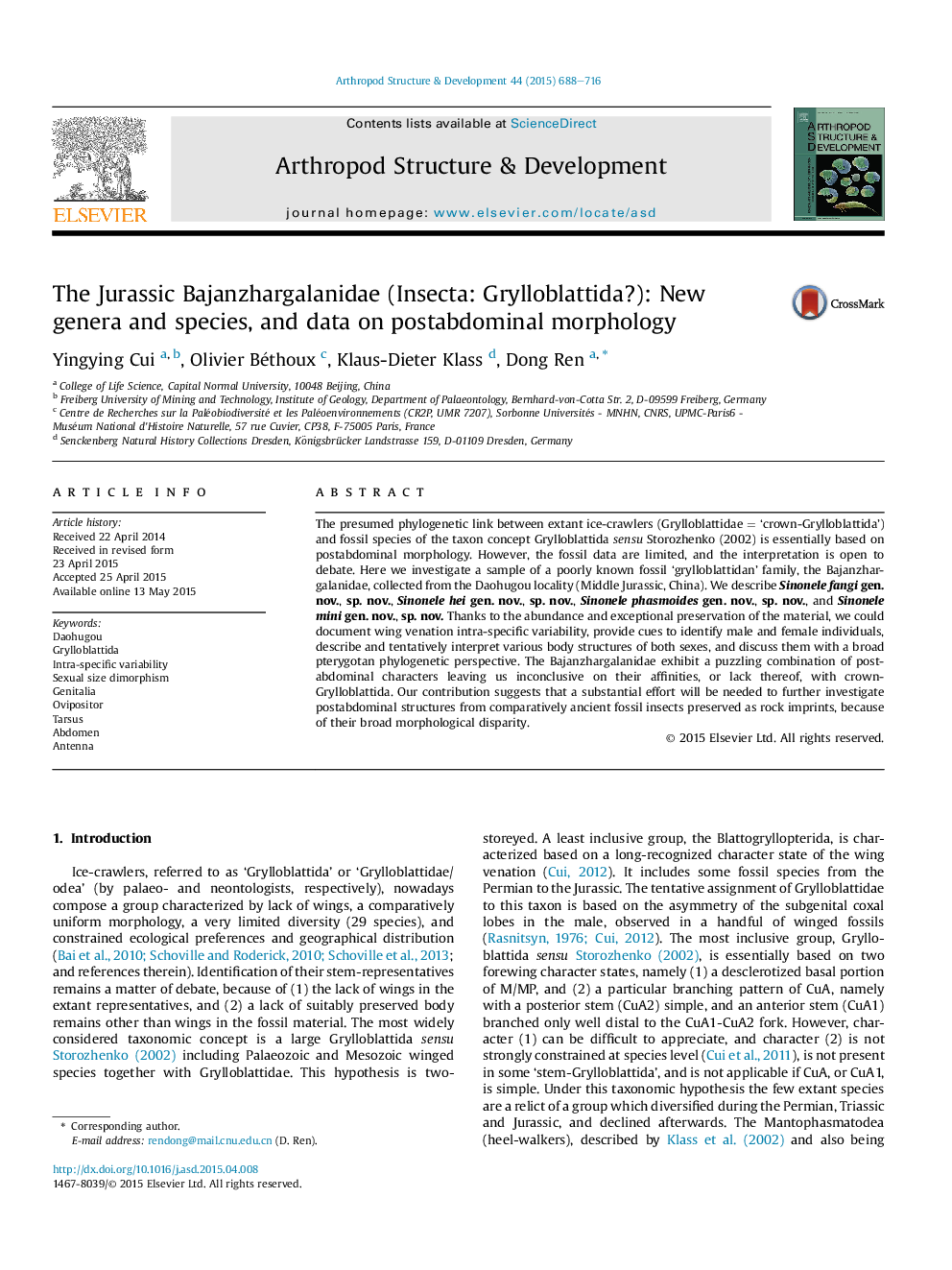| Article ID | Journal | Published Year | Pages | File Type |
|---|---|---|---|---|
| 2778518 | Arthropod Structure & Development | 2015 | 29 Pages |
•The abundant sample allowed us to investigate aspects of intra-specific variability (including sexual size dimorphism).•Several specimens allowed us to investigate details of the postabdominal morphology, rarely accessible from fossils.•This research has implications in terms or morphological disparity in the order, on its palaeoecology and paleobiodiversity.
The presumed phylogenetic link between extant ice-crawlers (Grylloblattidae = ‘crown-Grylloblattida’) and fossil species of the taxon concept Grylloblattida sensu Storozhenko (2002) is essentially based on postabdominal morphology. However, the fossil data are limited, and the interpretation is open to debate. Here we investigate a sample of a poorly known fossil ‘grylloblattidan’ family, the Bajanzhargalanidae, collected from the Daohugou locality (Middle Jurassic, China). We describe Sinonele fangi gen. nov., sp. nov., Sinonele hei gen. nov., sp. nov., Sinonele phasmoides gen. nov., sp. nov., and Sinonele mini gen. nov., sp. nov. Thanks to the abundance and exceptional preservation of the material, we could document wing venation intra-specific variability, provide cues to identify male and female individuals, describe and tentatively interpret various body structures of both sexes, and discuss them with a broad pterygotan phylogenetic perspective. The Bajanzhargalanidae exhibit a puzzling combination of postabdominal characters leaving us inconclusive on their affinities, or lack thereof, with crown-Grylloblattida. Our contribution suggests that a substantial effort will be needed to further investigate postabdominal structures from comparatively ancient fossil insects preserved as rock imprints, because of their broad morphological disparity.
